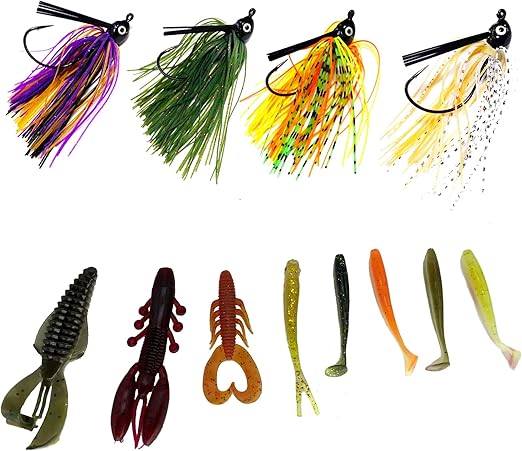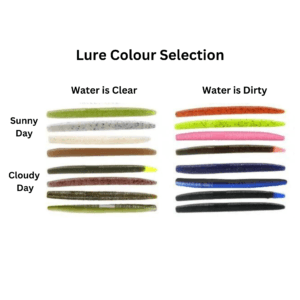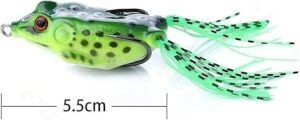How To Choose A Jig Trailer Based On Conditons For Big Bass

Getting to know where big bass hang out is the first step in choosing the right jig trailer. These fish love to linger around structures like submerged logs, rock piles, and weed beds where they can easily ambush prey. Pay attention to these spots in lakes and rivers, especially when planning a strategic approach.
Bass behavior is important and can vary from one location to the next. Understanding their movement patterns and what they tend to feed on helps in selecting the right bait. Observing their usual haunts and feeding frenzy during different times of day helps match your jig trailer to their natural preferences.
When you’re aiming for big bass, having a sense of the environment is key. Familiarize yourself with how bass use cover to their advantage. Things like water depth, surrounding vegetation, and nearby structures influence where and how they’ll strike. Knowledge of these factors bridges the gap between just casting a line and actually enticing a bite.
Assessing the Impact of Time of Day on Trailer Choice
An often underestimated factor in fishing success is the time of day. Bass activity fluctuates with the sun, affecting how these fish respond to different jig trailers.
In the early morning or late evening, bass tend to be more aggressive as they hunt. During these times, opt for jig trailers that offer a lot of action, like curly tails or paddle tails. These create vibrations and movements that capture the attention of bass looking for an easy meal.
Midday can be tricky since bass often retreat to deeper, cooler waters as the sun gets higher. Trailers mimicking natural prey with subtle, stealthy movements can turn a slow day into a successful one. Selecting neutral colors that blend with the environment won’t spook them away.
Choosing the right trailer isn’t just about visual appeal; it’s about matching the lure’s action to the bass’s feeding mood. Observing how the water and sky light conditions change throughout the day informs wiser choices that lead to better catches.
Adapting to Weather Conditions: Sunny, Cloudy, Windy, or Rainy Days
Weather plays a significant role in determining bass behavior and, consequently, your jig trailer selection. Understanding how these conditions affect the lake or river environment guides you to make smarter choices.
On sunny days, bass might retreat to shady spots or deeper waters to avoid the heat. In these conditions, consider using darker or more muted trailer colors. This helps in maintaining a natural presentation that doesn’t startle the wary bass seeking refuge from the sun.
Cloudy days often see bass more active and roaming around. This scenario is perfect for brighter and flashier trailers, as the reduced light penetration calls for something that catches their eye even under the cloud cover. Bright or reflective trailers work wonders in such conditions.
Windy days stir up the water and create noise, which can actually play in your favor. In these situations, opt for trailers that offer high action and vibration, like paddle tails or those with appendages. The increased movement not only attracts curious bass but also compensates for the noisier environment.
Rain introduces cool water and extra oxygen, which makes bass more active. During or immediately following a rain, using trailers that create a strong silhouette or have vibrant colors can take advantage of the feeding frenzy. Fish tend to bite more aggressively, so capitalize on it with a jig presentation that stands out.
Deciphering Water Clarity and Its Influence on Trailer Selection
Water clarity can be a game-changer when it comes to bass fishing. Understanding how clear, stained, or muddy waters affect visibility will impact which jig trailers will be most effective.
In crystal-clear water, bass can easily spot anything unnatural, so it’s wise to use subtle trailers that match the environment. Natural colors like browns, greens, or translucent shades blend seamlessly and mimic what bass typically hunt.
Stained or murky waters require a different approach. Brighter colors or trailers with more flash help draw bass to your bait since their visibility is reduced. Consider using trailers with chartreuse, white, or even bright blues to stand out in the cloudy environment.
Muddy waters call for maximum visibility, so picking trailers that create strong silhouettes and vibrations is crucial. Black, dark red, or dark blue trailers contrast well against the murky background and catch the bass’s attention through both sight and motion.

Matching the trailer to the water’s clarity isn’t just about color, though. Considering how the light penetrates the water affects how you choose the size and action of your trailer, ensuring your bait is both seen and sensed by those elusive big bass.
Considering Water Temperature: Cold vs. Warm Months
Water temperature has a big impact on bass behavior, influencing their activity levels and feeding patterns. Recognizing these shifts lets you tailor your approach and select the best jig trailer to match their mood.
In colder months, bass metabolism slows, and they become less aggressive in their pursuits. Choosing trailers with subtle actions becomes essential. Opt for jig trailers that provide minimal movement—like rubber skirted trailers—to mimic slow, easy prey that won’t require much effort to chase down.
As water warms up, bass become more active and opportunistic predators. In these conditions, trailers with more action, like curly tails or those with multiple appendages, can provoke strikes from energetic bass eager to make the most of this active period. Bright colors and fast-moving trailers can be particularly effective during this time.
Adjusting the retrieve speed is just as important as choosing the right trailer when considering water temperature. In colder water, slowing down both your jig and its trailer allows bass the opportunity to catch up, while in the warmer months, speeding up can trigger reaction bites from the more aggressive fish.
Tailoring your trailer selection to the current water temperature isn’t just a seasonal adjustment—it’s a consistent consideration every time you’re out on the water. Being aware of these changes ensures you stay ahead in your bass fishing endeavors.
Jig Trailers for Every Bait Type: Chatterbaits, Spinnerbaits, Swim Jigs, and Bottom Jigs
The choice of jig trailer can vary significantly depending on the type of bait you’re using. Each has its own unique action that pairs best with specific trailer types.

Chatterbaits are known for their vibrating action, which creates a lot of noise and movement. Perfect trailers for chatterbaits include those with a paddle tail or fluke style. These designs add even more vibration and mimic distressed baitfish, drawing in curious bass.
Spinnerbaits spin through the water creating a flashing effect that mimics schooling fish. Pair them with trailers that enhance this motion, like a curly tail grub or a trailer with flapping appendages. This combination maximizes the spinning motion and attracts bass from a distance.
Swim jigs are versatile and excel in covering water quickly. Trailers designed for swim jigs should maintain a straight, natural baitfish profile, like a paddle tail swimbait. These trailers enhance the jig’s lifelike swimming action and can effectively trigger strikes from lurking bass.
When fishing with bottom jigs, creature trailers provide extra bulk and visibility. As these jigs drag along the substrate, trailers with appendages mimic crawfish or other bottom-dwelling creatures, making them irresistible in a bass’s natural environment.
Understanding the action of each bait type and the conditions helps in choosing the right trailer. Aligning your trailer choice with your bait’s intended action brings out the full potential of your setup, increasing your chances of landing those big bass.


